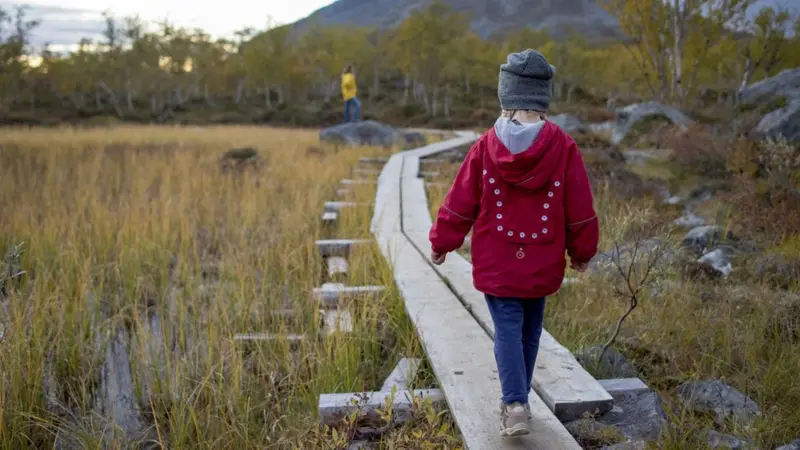
5 of the best countries in the world to raise children (and which is the best in Latin America)
The health or happiness of local children, the quality of education, parental leave policies, and even the number of green spaces or playgrounds.
These are the kinds of factors that Unicef – the UN children’s agency – focuses on in its “report cards” on child well-being . It’s important to note that its rankings only look at the world’s richest countries, which make up the OECD. But its findings help paint a deep picture of what it’s really like to raise children in countries around the world.
We have drawn on some of this research to try to answer the question: what are the best places to raise children or to be a child?
Japan
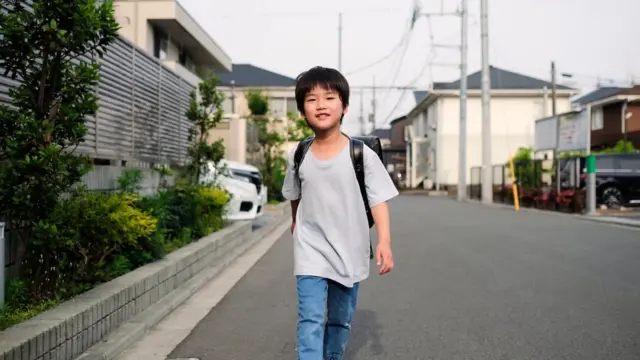
Image source,Getty Images
In Unicef’s 2020 child well-being analysis, Japan ranked first in physical health, which looks at child mortality and obesity. And in Unicef’s most recent 2022 report card, which looked specifically at the environments in which children grow up, it ranked second in the “world around the child,” a category that includes aspects such as urban green spaces and road safety.
Japan also has extremely low levels of air or water pollution that affects children.
It is also one of the safest countries for families. Japan’s overall homicide rate is the lowest of any country analysed by Unicef: 0.2 per 100,000, which is a fraction of that of the United States (5.3), Canada (1.8) or even Australia (0.8).
The safety factor has a huge effect on the freedom children can enjoy , according to Mami McCagg, originally from Tokyo and now living in London and hosting the Bilingual News podcast.
“Children go to school alone from the age of 6,” she said. “Even in central Tokyo, children just walk and go to school alone. It’s completely normal because it’s really safe. No one is worried about their children because we don’t have to be,” she added.
Japan also has one of the best education systems in the world , ranking 12th out of 76 countries and regions, according to OECD assessments that Unicef relied on for its data. And it provides generous paid parental leave entitlements – about 12 months for each parent.
Estonia
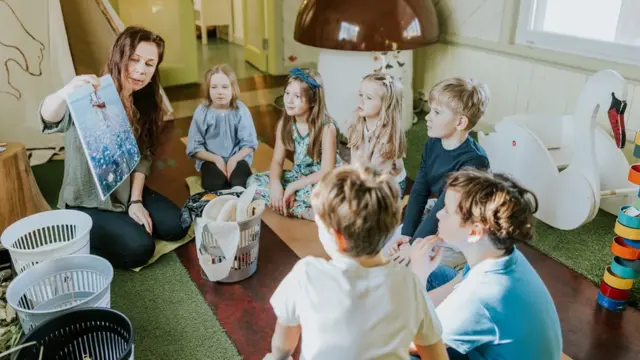
Image source,Getty Images
Although Estonia is not at the top of Unicef’s overall ranking, it does rank highly in several important areas.
Children are exposed to less air pollution, less noise pollution and fewer pesticides than in almost any other rich country.
It has more urban green space than many other nations, including the US, Canada or Australia, and children are more likely to say they enjoy their neighbourhood’s facilities, such as playgrounds.
Estonia also has the second-lowest rate of low birth weight babies among wealthy countries, which is generally considered a good indicator of the quality of prenatal care.
One of the biggest draws is Estonia’s education system: children have better skills in math, science and literacy than any other country except Asia.
Digital skills are also emphasized . “Already in kindergartens there are robotics, smart tablets and so on, all used as part of play-based learning,” said Anne-Mai Meesak, a project manager at Estonia’s youth and education board who researches the country’s early education systems.
But the benefits of the system go further. A recent OECD report found that the average Estonian 5-year-old is better at several social-emotional skills, including cooperation with other children and identifying emotions, than those in the US and England. They are also well above the OECD average in skills such as mental flexibility, working memory and impulse inhibition.
Then there’s parental leave: Estonia has one of the most generous policies of any country in the world, with 100 days of maternity leave , as well as 30 days of paternity leave, followed by 475 days of paid parental leave between the two, to be split or used part-time until the child is 3 years old.
On 60 of those days, both parents can stay home simultaneously and receive pay. Each parent also receives 10 working days per year of paid parental leave for each child under age 14.
Spain
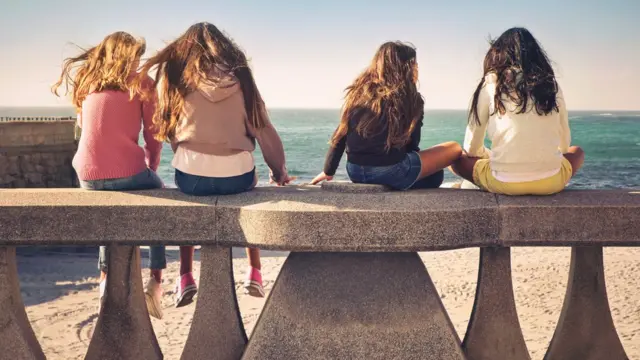
Image source,Getty Images
Spain ranked first in UNICEF’s ranking of children’s environment, with particularly low levels of child morbidity due to air or water pollution.
And despite having a poorer overall provision in terms of social, educational and health services, according to Unicef, children in Spain have remarkably high well-being: the country ranks third in children’s mental well-being and fourth in basic academic and social skills.
In particular, it is on a par with the Netherlands in terms of how many children say they make friends easily (81%), while the teenage suicide rate is one of the lowest in rich countries and less than a third of that in the US, Canada, Australia or New Zealand.
That’s no surprise to Lori Zaino, who moved to Madrid from Chicago 15 years ago. Now the mother of a toddler, she says one of the most refreshing aspects of life in Spain is how much the culture embraces children.
“Here it’s socially acceptable to take your child everywhere: restaurants, bars. It’s totally normal to see a family with a small child walking around at midnight,” she said. “It takes a lot of pressure off to keep your children quiet and relaxed, so they don’t bother other people. In Spain, nobody worries about that,” she added.
Then there’s parental leave: both mothers and fathers get 16 weeks paid leave at 100% of their salary, and afterward the mother can take unpaid leave for up to three years or reduce her hours. As with the other countries listed, it’s not perfect: lack of available childcare is a particularly big problem. A third of fathers wish there was more of it available, the highest rate of any rich country.
Finland
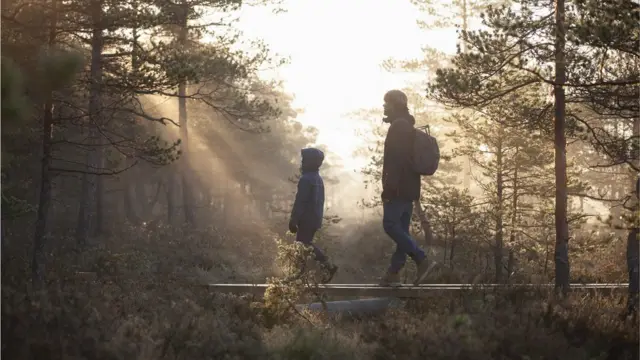
Image source,Getty Images
Finland, which ranked fifth overall in Unicef’s most recent report card, scores especially highly in two of the three categories: number one for “the child’s world” (which looks at how the environment directly affects children, such as air quality), and number two for “the world around the child” (which looks at the elements of the environment that a child interacts with, such as schools, traffic hazards and green spaces).
It is one of the best-performing countries in the world in terms of children’s literacy and numeracy skills, and parents are very likely to work on their relationship with staff at their children’s school.
Its mortality rate for children ages 5 to 14 is one of the lowest in the world — less than half that of the U.S. And the country offers generous parental leave , including eight weeks of paid maternity leave, another 14 months of paid parental leave to be split between parents, and additional child-care leave that can be used until the child turns 3.
Finland also has the most urban green space per person of any rich country.
What about the dark, cold Finnish winters? They’re a price worth paying, says Hadley Dean, a British father of five living in the Scandinavian country. “You just get used to it, you dress accordingly, you have spikes on your shoes when you go out, and you make the most of it. And the summers are absolutely amazing, because you have 22 hours of sunlight.”
Netherlands
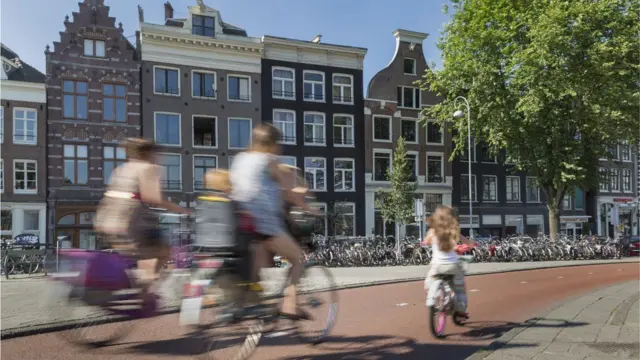
Image source,Getty Images
At the top of Unicef’s overall list for child well-being is the Netherlands, which does particularly well in terms of children’s mental health (it is number one) and skills (where it is ranked third). Nine in 10 15-year-olds say they have high life satisfaction – the highest proportion of all the countries examined by Unicef – and eight in 10 say they make friends easily.
Their parental leave policy is one example. It includes at least 16 weeks of mandatory, fully paid maternity leave and up to six weeks of paid paternity leave, in addition to unpaid parental leave that can be taken until the child turns 8.
Chili

Image source,Getty Images
The Latin American country with the highest score in the UNICEF ranking is Chile, although its indicators are not exceptional and it is located in the last third of the list.
It has the best results in the region in the OECD’s PISA tests in science and reading, and parental leave lasts 31 weeks on average, according to Unicef, although in this country the right is mostly directed towards women and not towards men who have children.
The South American nation is also the one that allocates the most economic transfers to families on the continent, above Canada or the United States, and more than European countries such as Spain.
While violence in the country, as measured by the homicide rate, is higher than the average for rich nations, it is the lowest in Latin America.






